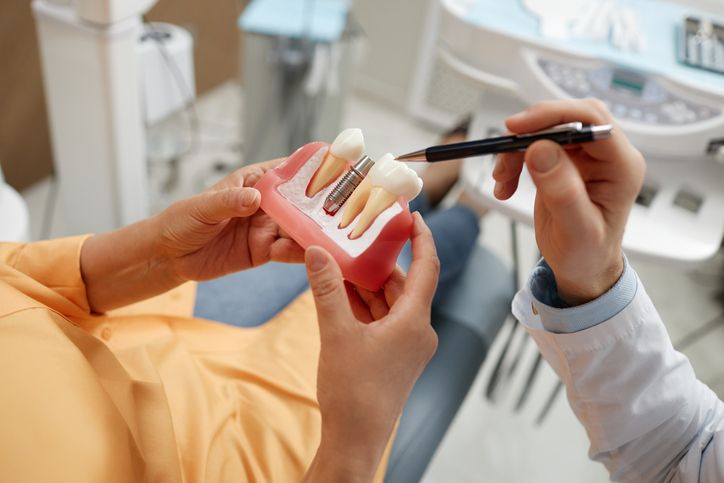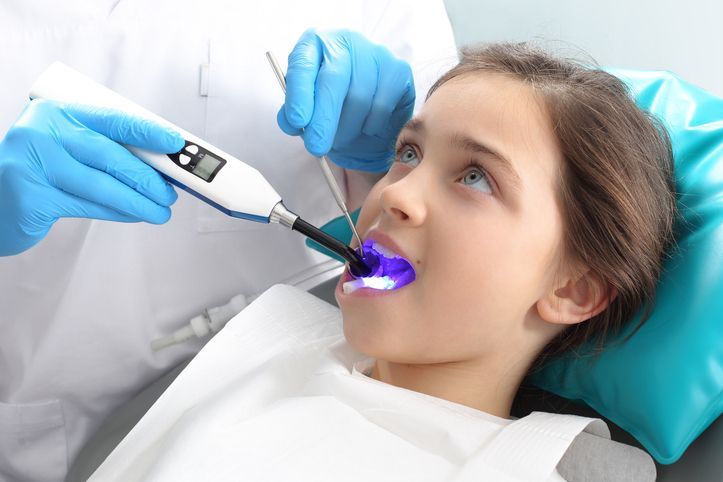Dental Emergency? (724)942-8300
How Orthodontic Treatment Can Correct Jaw Alignment Issues

Have you or your child been struggling with jaw alignment issues? These problems go beyond just the appearance of your smile—they can significantly impact your overall health and quality of life. Whether it's difficulty chewing, speech problems, or even breathing issues, jaw misalignment isn't something to ignore.
This blog will explore how orthodontic treatment can correct jaw alignment issues. We'll cover everything from the types of jaw problems and their causes to the various treatments available and their benefits.
By the end, you will have a clearer understanding of how orthodontic interventions can significantly improve your health and self-esteem.
Understanding Jaw Alignment Issues
Types of Jaw Alignment Problems
Jaw alignment issues come in various forms, each posing different challenges. The most common types include overbites, underbites, crossbites, and open bites.
An overbite happens when the upper front teeth extend far beyond the lower front teeth. This can cause excessive wear on the lower teeth and may even cause difficulty in chewing.
With an underbite, the opposite happens, where the lower teeth protrude past the upper teeth. This condition often results in an imbalanced facial appearance, which can affect chewing and speech.
Crossbite happens when some upper teeth sit inside the lower teeth rather than outside. This can cause uneven wear on your teeth and may lead to jaw pain over time.
An open bite happens when there's a gap between the upper and lower front teeth, but the back teeth touch. This can make biting into food difficult and may lead to speech problems.
Causes of Jaw Misalignment
Several factors contribute to jaw misalignment. Understanding these can help in seeking timely orthodontic intervention.
- Genetic factors play a significant role. If jaw misalignment issues run in your family, you're also more likely to experience them.
- Childhood habits like thumb-sucking and prolonged pacifier use can lead to jaw misalignment. These habits exert pressure on developing jaws, causing them to grow improperly.
- Injury or trauma can also affect jaw alignment. If not treated promptly, an accident that impacts the jaw can result in misalignment.
- Medical conditions like TMJ disorders can contribute to jaw misalignment. These conditions often affect the joints that connect your jaw to your skull, leading to alignment issues.
Impact of Jaw Alignment Issues
Physical Health
Jaw alignment issues can have profound effects on your physical health.
Difficulty chewing and eating is a common problem. Misaligned jaws can make it hard to bite and chew food properly, affecting your nutrition.
- Speech problems often accompany jaw misalignment. Pronouncing certain words becomes challenging, leading to communication difficulties.
- Breathing issues may also arise because misaligned jaws obstruct airways, making breathing hard, especially during sleep.
- Temporomandibular joint (TMJ) pain is another concern due to the extra strain misalignment puts on your TMJ, leading to chronic pain and discomfort.
Aesthetic Concerns
Misaligned jaws can make a person's face look uneven, affecting their overall appearance. Feeling self-conscious about your jaw alignment can affect social interactions and mental well-being, seriously impacting your self-esteem.
Dental Health
Proper jaw alignment is crucial for maintaining good dental health. Misaligned jaws can also make it hard to clean teeth properly, leading to plaque buildup which can also lead to an increased risk of tooth decay and gum disease. Misaligned jaws also cause uneven pressure on your teeth, leading to premature wear.
Orthodontic Solutions for Jaw Alignment Issues
Braces
Braces are one of the most effective treatments for jaw alignment issues. Braces apply continuous pressure over time to move teeth and jaws into the desired position.
- Traditional metal braces are an effective treatment but more noticeable, while ceramic braces are available in clear or white options that make them less\
- obvious. Lingual braces, which are placed behind the teeth, are a great invisible option.
Invisalign and Clear Aligners
Clear aligners are a great choice for those who prefer a less conspicuous option. They have numerous benefits for jaw correction. They are practically invisible, boosting your confidence, and can also be removed for eating and cleaning. Aligners work using a series of custom-made trays that shift your jaw and teeth gradually into alignment.
Palatal Expanders
Palatal expanders are commonly used for children and teenagers.
It is used to widen the upper jaw, crucial for creating space for incoming permanent teeth. Benefits for children and teenagers include preventing overcrowding and ensuring proper jaw growth.
Headgear and Other Appliances
Severe misalignments may require additional appliances, such as headgear, which corrects overbites, underbites, and crossbites. The Herbst appliance, a fixed functional appliance, is also used to correct severe bite issues. It works to keep the lower jaw forward, promoting proper jaw growth.
Bite plates are appliances that can address common dental issues in children and teenagers. They are made of plastic or metal and custom-made to fit the child's mouth. Bites plates are used to correct bite problems, such as an open bite or deep bite.
The Treatment Process
Initial Consultation and Diagnosis
The first step in correcting jaw alignment is a thorough consultation and diagnosis.
Comprehensive examination and imaging are performed to help in determine the extent of your misalignment. Once a diagnosis is made, a personalized treatment plan is then created to address your specific needs.
Active Treatment Phase
The active treatment phase involves multiple stages. The duration and steps involved vary depending on the severity of the misalignment and the type of treatment being used. Typical steps in this process include:
Step 1: Placement of Orthodontic Appliances
Once your treatment plan is finalized, your orthodontist will place the appropriate appliances to correct your jaw alignment. These customized appliances are made to fit your mouth and can include options like braces, aligners, or functional appliances.
Step 2: Regular Check-Ups
Throughout the active treatment phase, you must visit your orthodontist regularly for progress checks and adjustments. This ensures that your treatment plan is working effectively and any necessary changes can be made.
Step 3: Compliance with the Treatment Plan
It is essential to follow all instructions your orthodontist gives and comply with wearing any prescribed appliances as instructed. This will help achieve optimal results in a timely manner.
Step 4: Proper Oral Hygiene
Maintaining proper, consistent oral hygiene is crucial during orthodontic treatment. This includes brushing and flossing daily and avoiding foods that can damage your appliances.
Step 5: Retention
After your active treatment phase is complete, you will need to wear a retainer to maintain the results achieved. It is crucial to follow your orthodontist's instructions for wearing the retainer to prevent relapse.
The importance of follow-up appointments cannot be overstated. Regular dental check-ups ensure the treatment is progressing as planned and allow for adjustments to be made to keep you on track.
Post-Treatment Care
Maintaining your new jaw alignment requires ongoing care. Retainers are crucial for maintaining results. They help keep your teeth and jaw in their new positions. Ongoing care includes practicing good oral hygiene and developing healthy lifestyle habits. Monitoring and ongoing care also involve periodic visits to your orthodontist to ensure everything remains in place.
Benefits of Correcting Jaw Alignment
Improved Oral Function
Correcting jaw alignment offers numerous functional benefits:
- Easier chewing and speaking are immediate improvements. Proper alignment makes these daily activities much more comfortable
- Better digestion and overall health follow from improved chewing efficiency, which aids in proper digestion.
Enhanced Aesthetics
Improving jaw alignment also enhances your appearance.
Properly aligned jaws result in a more balanced facial appearance, giving you a more harmonious look. Boosted confidence and self-esteem come naturally. Feeling happy about your appearance can positively impact all areas of your life.
Long-Term Oral Health
Correcting jaw alignment has many benefits. One significant advantage is the reduced risk of dental problems. Proper alignment also makes it easier to maintain good oral hygiene. Another long-term benefit is the preservation of natural teeth. Reduced wear and tear means your teeth will last longer.
Make an Appointment at Severns Dentistry & Orthodontics Today!
Addressing jaw alignment issues is not just about improving your smile—it's about enhancing your overall quality of life. From better oral function to boosted confidence, the benefits are extensive. If you or your child are facing jaw alignment issues, don't hesitate to seek professional advice from the experts at Severns Dentistry & Orthodontics. Early intervention can make a world of difference.
Taking the first step is easy. Contact Severns Dentistry to schedule a consultation. Our expert team is here to guide you through the process and help you achieve a healthier, more confident smile.

Author:
Natalie Severns, DMD
Upon graduating from the University of Pittsburgh School of Dental Medicine, Dr. Severns specialized in Orthodontics and Dentofacial Orthopedics at the University of Pittsburgh School of Dental Medicine. She then did an externship in London, England, at the prestigious Guy’s Hospital. At this hospital, she learned top therapies in Dentofacial Orthopedics to provide her patients with the best possible facial esthetics.
Blog

©2022 Severns Dentistry and Orthodontics.
All Rights Reserved. Website Design by Higher Images









